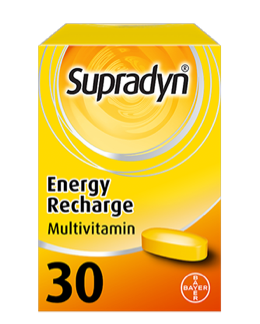FOR HEALTHCARE PROFESSIONALS
How Supradyn works: Physical growth & development during childhood
When growing up, children and adolescents have an increased need for micronutrients due to rapid physical growth and development.
If their micronutrient levels are not optimal, however, they might experience bone and joint paint, inadequate skeletal mineralization, bone deformities, reduced height and weight, and alterations in muscle metabolism and respiratory function. Another potential danger is the constantly increasing incidence of bone fractures caused by a lack of physical exercise, excessive consumption of carbonated soft drinks, obesity, and a lack of micronutrients, including vitamin D, vitamin K and calcium. Supradyn Kids supports healthy physical growth and development of children by providing essential vitamins and minerals. Calcium, vitamin D, vitamin K, iodine, iron, and vitamin B complex are among the key micronutrients that ensure normal growth. Vitamin D and calcium are essential for the development and health of bone in children. They strengthen the bone structure and minimize the risk of bone fractures. Furthermore, vitamin K modifies a subset of proteins that transport calcium around the body, enabling maintenance of a strong skeletal system and teeth. Iodine is crucial for the early stages of a child’s growth. It plays a major role in the synthesis of thyroid hormones and the development of almost all organs. Iron and the B vitamins are also required for a child’s growth and proper development, with vitamin B1 responsible for the regulation of skeletal muscle function and development of balance control and fine motor skills.
- Calcium is an essential nutrient for bone health7
- Vitamin D is needed for the normal growth and development of bone in children8
- Vitamin D regulates intestinal calcium transport and mineralisation of bone9-11
The effects of vitamin D and calcium cannot be separated7
Calcium and vitamin D supplementation can strengthen bone structure in infants and children and may reduce the risk of bone fractures.
- Modifies a subset of proteins that transport calcium around the body, enabling maintenance of a strong skeletal system and teeth7
- A calcium chaperone7
- Crucial for the synthesis of thyroid hormones T3 and T4, which are important during the early stages of growth and for the development of almost all organs13,14
- Required for the production of dopamine, serotonin, and GABA, involved in neurotransmission14
- Required for growth and behavioural development15
- Involved in growth and development16,17
- Vitamin B1:
- A key contributor to regulation of skeletal muscle function17
- Involved in the development of balance control and fine motor skills17
- Vitamin C promotes the formation of intercellular substances (collagen, ossein, and dentin). Its role in collagen formation is of importance for growth as collagen synthesis is essential for bone matrix and connective tissue synthesis18,19
Potential consequences of insufficient micronutrients:
REFERENCES
- Micronutrient requirements of children ages 4 to 13 years. Oregon State University. Av ailable from: https://lpi.oregonstate.edu/mic/life-stages/children. Accessed August 2018;
- Micronutrient requirements of adolescents ages 14 to 18 years. Oregon StateUniversity. Av ailable from: https://lpi.oregonstate.edu/mic/life-stages/adolescents. Accessed August 2018;
- KarpinskiM, et al. Roles of v itamins D and K, nutrition, and lifestyle in low-energy bone fractures in children and young adults. J Am CollNut r2017;36:399–412;
- IOM (Institute of Medicine). 2011. Dietary Reference Intakes for Calcium and Vitamin D.Washington, DC: The National Academies Press;
- SolimanAT, et al. Vitamin D deficiency in adolescents. Indian J EndocrinolMetab2014;18(Suppl1):S9–S16;
- Kruger HS. The necessity for a balanced diet in children: physical, mental and intellectual development. Av ailable from: http://www.fao.org/fileadmin/templates/est/COMM_MARKETS_MONITORING/Dairy/Documents/02__Kruger_pres.pdf. Accessed August 2018;
- EFSA, Scientific Opinion on the substantiation of a health claim related to vitamin D and contribution to normal bone and toothdevelopment pursuant to Article 14 of Regulation (EC) No 1924/2006. EFSA Journal2014;12:3579;
- Vitamin D, in dietary reference intakes for calcium and v itamin D. A report of the panel on micronutrients, standing committee on the scientific ev aluation of dietary reference intakes; food and nutrition board. Institute of Medicine2010, National Academy Press: Washington, D.C. 75–456;
- DeLuca HF. The v itamin D story: a collaborative effort of basic science and clinical medicine. FasebJ 1988;2:224–36;
- Bonjour JP, et al. Peak bone mass. Ost eoporosInt1994;4(Suppl1):7–13;
- KapilU. Health Consequences of Iodine Deficiency.Sult an QaboosUniversity Medical Journal2007;7:267–72;
- Zimmermann MB. The role of iodine in human growth and development. SeminCell Dev Biol2011;22:645–52;
- Singh M. Role of micronutrients for physical growth and mental development. Indian J Pediatr2004;71:59–62;
- Filer LJ Jr. Iron needs during rapid growth and mental development. J Pediatr 1990;117:S143–6;
- Strand TA, et al. Vitamin B-12, folic acid, and growth in 6-to 30-month-old children: a randomized controlled trial. Pediatrics2015;135:4;
- Chu W. B v itamin deficiencies linked to poor infant development issues. Available from: https://www.nutraingredients.com/Article/2017/03/30/B-vitamin-deficiencies-linked-to-poor-infant-development-issues. Accessed August 2018.
- Bergman P, et al. Vitamin D and Respiratory Tract Infections: A Systematic Review and Meta-Analysis of Randomized Controlled Trials. PLoSOne 2013;8:e65835;
- Camargo CA Jr, et al. Randomized trial of v itamin D supplementation and risk of acute respiratory infection in Mongolia. Pediatrics2012;130:e561–7;
- GombartAF, BorregaardN, KoefflerHP. Human cathelicidinantimicrobial peptide (CAMP) gene is a direct target of the vitamin D receptor and is strongly up-regulated in myeloid cells by1,25-dihydroxyvitamin D3.FasebJ2005; 19:1067–77;









